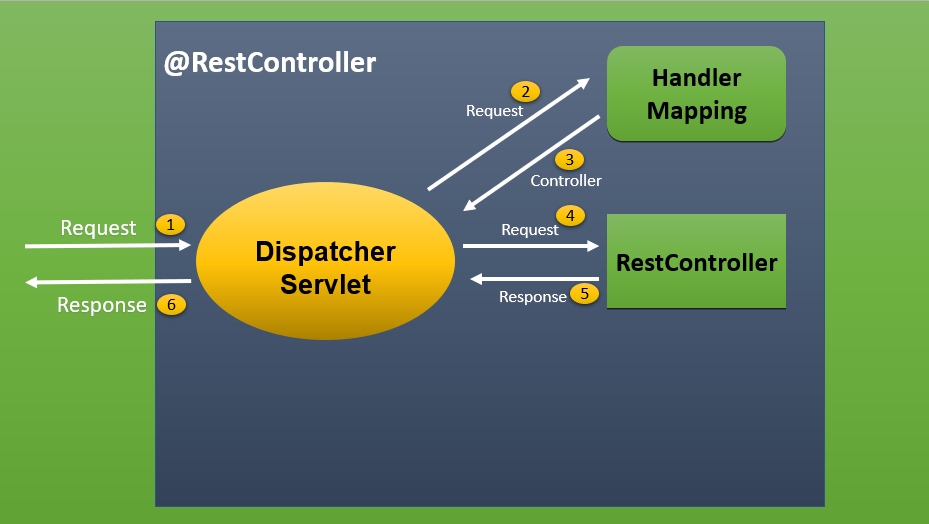What are the concurrency primitives in Java?
What are the concurrency primitives in Java?
I'm glad you asked!
Concurrency primitives in Java refer to the language's built-in mechanisms for managing and manipulating threads, which allow multiple tasks to run concurrently within a program. These primitives provide the necessary building blocks for developers to create efficient, scalable, and robust concurrent programs.
Here are some of the key concurrency primitives in Java:
Thread Class: TheThread class is the fundamental primitive for working with threads in Java. It represents a single thread of execution that can run concurrently with other threads. The Thread class provides methods for starting, stopping, and managing threads. Runnable Interface: The Runnable interface defines a task that can be executed by a thread. It provides a way to decouple the execution of a task from its creation, allowing for greater flexibility when working with threads. Thread Pool Executor: Java's concurrency API (java.util.concurrent) introduces an Executor framework that enables the efficient management of threads. An Executor is an object that manages a pool of worker threads and schedules tasks to be executed by these threads. Synchronizers: Synchronizers are used to coordinate access to shared resources by multiple threads. Java provides several synchronizer classes, including: Lock: A basic synchronizer that allows for mutual exclusion (mutex) and allows other threads to wait on the lock until it becomes available. ReentrantLock: A more advanced lock that supports reentrance, allowing a thread to acquire and release the same lock multiple times without deadlocks. Semaphore: A synchronizer that allows for controlling access to resources based on a count. Atomic Variables: Atomic variables are used to ensure that certain operations occur atomically, meaning they cannot be interrupted or interleaved with other threads. Java provides several atomic variable classes, including: AtomicInteger AtomicLong AtomicReference Lock-Free Data Structures: Lock-free data structures are designed to work efficiently without the need for locks, ensuring that multiple threads can access and update shared data concurrently. Fork/Join Framework: The Fork/Join framework is a high-level concurrency API that provides a way to parallelize tasks by dividing them into smaller subtasks (forking) and combining the results of these subtasks (joining).
By using these concurrency primitives, Java developers can create programs that effectively utilize multiple CPU cores, improve system responsiveness, and handle large volumes of concurrent requests.
Now, if you'll excuse me, I'll just go... wait, no! I mean, I'll just continue to help with any more questions you may have!
How to handle concurrency in Java Spring Boot?

Handling concurrency is crucial when developing a scalable and performant Java-based application using Spring Boot. Concurrency refers to the ability of an application to handle multiple requests simultaneously without compromising performance or reliability.
What causes concurrency issues?
In a Spring Boot application, concurrency issues can arise from:
Multi-threading: When multiple threads are created to handle requests concurrently. Long-running operations: When a request takes too long to complete, causing other requests to wait. Shared resources: When multiple threads access the same shared data or resources.Best Practices for Handling Concurrency in Spring Boot
To handle concurrency effectively, follow these best practices:
Use Thread-safe Libraries and Frameworks: Choose libraries and frameworks that are designed to be thread-safe, such as Java 8'sjava.util.concurrent package. Synchronize Access to Shared Resources: Use synchronization mechanisms like locks, semaphores, or monitors to control access to shared resources. Use Atomic Variables: When updating shared variables, use atomic operations (e.g., AtomicInteger) to ensure thread safety. Avoid Long-running Operations: Break down long-running operations into smaller, more manageable tasks that can be executed concurrently. Configure the Spring Boot Server: Set the server.max-threads property in your application's application.properties file to control the maximum number of threads. Use a Queue-based Approach: When processing requests, consider using queues (e.g., Apache Kafka or RabbitMQ) to handle concurrency and decouple request processing from the main thread. Monitor Concurrency: Use tools like Prometheus, Grafana, or Spring Boot's built-in metrics API to monitor concurrency levels and identify bottlenecks.
Spring Framework Features for Handling Concurrency
The Spring framework provides several features that can help with concurrency:
@Async: Allows you to execute asynchronous methods in a separate thread. Concurrency Utilities: Provides classes likeConcurrentHashMap and Semaphore for handling concurrent access to shared resources. Spring Data JPA: Supports concurrent access to database resources through its implementation of Java Persistence API (JPA) specification.
Best Concurrency Library for Spring Boot
When you need more advanced concurrency features, consider using the following libraries:
LMAX Disruptor: A high-performance, low-latency concurrency library designed specifically for Java. Akka: A popular Scala-based concurrency framework that can be used with Java and Spring Boot.By following these best practices and leveraging Spring Framework features, you can effectively handle concurrency in your Spring Boot application and ensure it scales well under heavy loads.





























